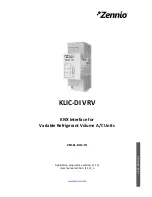
DMU380SA Series
User’s Manual
________________________________________________________________________
Doc# 7430-0026 Rev. 01
Page 28
providing dynamic roll and pitch measurements, in addition to the IMU data. The
dynamic roll and pitch measurements are stabilized by the using the accelerometers as a
long-term gravity reference. Unlike the VG400 and earlier MEMSIC VG Series products,
the VG380SA can also output a free integrating yaw angle measurement that is not
stabilized by a magnetometer or compass heading (see AHRS380SA or INS380SA for
stabilized heading). At a fixed 200Hz rate, the VG380SA continuously maintains both the
digital IMU data as well as the dynamic roll and pitch data. As shown in the software
block diagram Figure 14, after the Sensor Calibration block, the IMU data is passed into
an Integration to Orientation block (Please refer to the Figure 11 if external GPS aiding
will be used). The Integration to Orientation block integrates body frame sensed angular
rate to orientation at a fixed 200 times per second within all of the DMU380SA Series
products. For improved accuracy and to avoid singularities when dealing with the cosine
rotation matrix, a quaternion formulation is used in the algorithm to provide attitude
propagation.
As also shown in the software block diagram, the Integration to Orientation block
receives drift corrections from the Extended Kalman Filter or Drift Correction Module. In
general, rate sensors and accelerometers suffer from bias drift, misalignment errors,
acceleration errors (g-sensitivity), nonlinearity (square terms), and scale factor errors.
The largest error in the orientation propagation is associated with the rate sensor bias
terms. The Extended Kalman Filter (EKF) module provides an on-the-fly calibration for
drift errors, including the rate sensor bias, by providing corrections to the Integration to
Orientation block and a characterization of the gyro bias state. In the VG380SA, the
internally computed gravity reference vector provides a reference measurement for the
EKF when the VG380SA is in quasi-static motion to correct roll and pitch angle drift and
to estimate the X and Y gyro rate bias. Because the gravity vector has no horizontal
component, the EKF has no ability to estimate either the yaw angle error or the Z gyro
rate bias. The VG380SA adaptively tunes the EKF feedback in order to best balance the
bias estimation and attitude correction with distortion free performance during dynamics
when the object is accelerating either linearly (speed changes) or centripetally (false
gravity forces from turns). Because centripetal and other dynamic accelerations are often
associated with yaw rate, the VG380SA maintains a low-passed filtered yaw rate signal
and compares it to the turnSwitch threshold field (user adjustable). When the user
platform to which the VG380SA is attached exceeds the turnSwitch threshold yaw rate,
the VG380SA lowers the feedback gains from the accelerometers to allow the attitude
estimate to coast through the dynamic situation with primary reliance on angular rate
sensors. This situation is indicated by the softwareStatus
turnSwitch status flag. Using
the turn switch maintains better attitude accuracy during short-term dynamic situations,
but care must be taken to ensure that the duty cycle of the turn switch generally stays
below 10% during the vehicle mission. A high turn switch duty cycle does not allow the
system to apply enough rate sensor bias correction and could allow the attitude estimate
to become unstable.
The VG380SA algorithm has two major phases of operation. The first phase of operation
is the initialization phase. During the initialization phase, the VG380SA is expected to be
stationary or quasi-static so the EKF weights the accelerometer gravity reference heavily
in order to rapidly estimate the roll and pitch angles, and X, Y rate sensor bias. The
initialization phase lasts approximately 60 seconds, and the initialization phase can be
monitored in the softwareStatus BIT transmitted by default in each measurement packet.
After the initialization phase, the VG380SA operates with lower levels of feedback (also
referred to as EKF gain) from the accelerometers to continuously estimate and correct for
roll and pitch errors, as well as to estimate X and Y rate sensor bias.
If a user wants to reset the algorithm or re-enter the initialization phase, sending the
algorithm reset command, ‘AR’, will force the algorithm into the reset phase.
















































